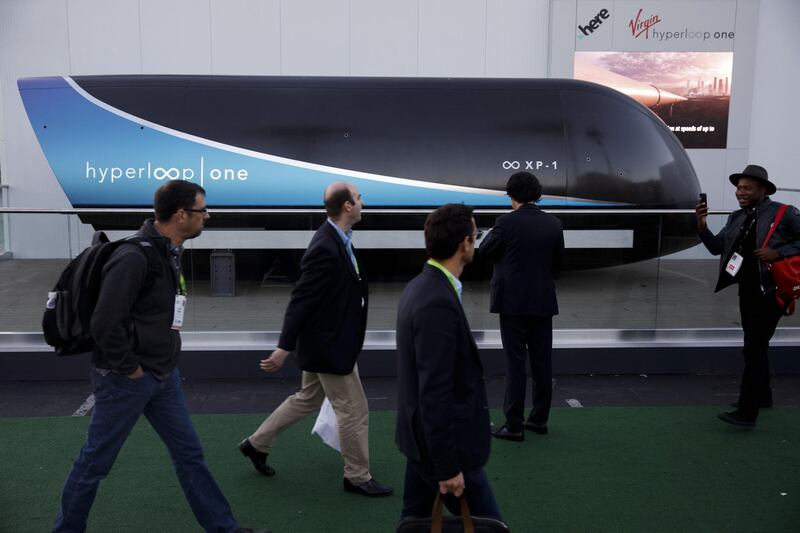A Canadian start-up is the latest contender in the race to build a super-fast transportation system to rival futuristic projects backed by Elon Musk and British tycoon Sir Richard Branson.
TransPod wants to attract $50 million for its own version of hyperloop technology, designed to ferry passengers at speeds of more than 1,000 kilometres an hour. The company, based in Toronto, is planning to build a half-size prototype near Limoges in central France by next year that is better than a concept put forth by Mr Musk, according to chief executive Sebastien Gendron.
The tube-based transport technology known as hyperloop is gaining traction after Mr Musk first theorised it in 2013. It has since sprouted a number of competing versions aimed at linking cities at far faster speeds than existing bullet trains in Europe, Japan and China. Branson-backed Virgin Hyperloop One is testing in Nevada, while a California company called Hyperloop Transportation Technologies also plans to build a test track in southern France. Mr Musk’s SpaceX is organising hyperloop design competitions after building a one-mile long system near its California headquarters.
“Musk’s concept is brilliant, but it’s filled with errors,” said Mr Gendron in Paris. “We have a more modest, but also cheaper and regulation-oriented approach.”
_______________
Read more:
Saudi Arabia says Virgin Hyperloop One rapid-transit system will be catalyst for growth
Global race to bring first Hyperloop to passengers goes into hyperdrive
_______________
The company’s patented technology will use magnetic propulsion and electrified tracks to move pods through a 2-mile-long vacuum tunnel designed to reduce friction. The pods would resemble aircraft without wings. Mr Musk’s idea was different. Five years ago, he had planned to transport pods on air bearings, a method used by industry to move heavy objects.
TransPod’s system would be cheaper than Mr Musk’s version, said Mr Gendron, who previously worked for Airbus and Bombardier. Costs would be contained by using existing technology for plane fuselage and pressurised cabins and could work out to about €20 million (Dh90.09m) per kilometre, or a third cheaper than a high-speed train to connect Paris to Frankfurt, he said.
The Limoges test track will be designed to allow pods to run as fast as 600kph, which is more than France's fast TGV train, but slower than the ultimate goal of more than 1,000kph. Aircraft cruise at about 850kph. TransPod is scouting around for sites including near Orleans in France and Calgary, Alberta to build a full-size model by 2021.
“We’re going to disrupt everything,” Mr Gendron said, predicting the company’s hyperloop would lead to a transformation in the transport sector that would affect aircraft manufacturers as well as train operators like Siemens and Alstom.
“Our approach will outlast the competition. We’re in it for the marathon.”






